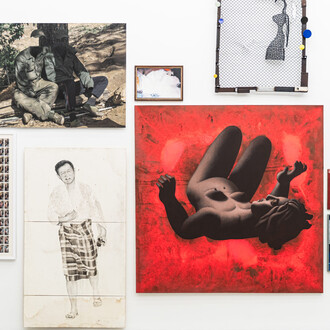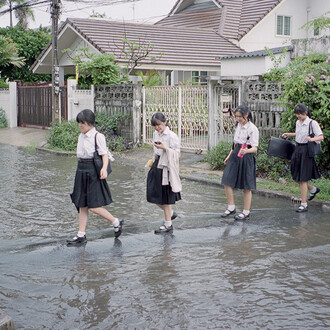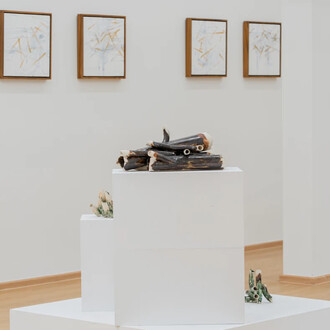I a pixel, we the people is an ambitious 24-episode video-based work that expands upon Chulayarnnon Siriphol’s existing practice, archives, and political commentary. Rooted in a body of work spanning two decades, the project draws from the artist’s extensive history of short films and video art since 2004, reconfiguring past narratives into a new, episodic structure. This work employs old and new footage, digitised VHS and Mini-DV home videos, and material from the Thai film archive, constructing speculative narratives that align personal histories with collective memories. The exhibition presents the videos in an overwhelming display of family objects reflecting on digital transformation, mass mobilization, and the evolving structures of contemporary art.
At its core, I a pixel, we the people envisions digital transformation as a new frontier for resistance, solidarity, and artistic expression in the face of state oppression. The artist frames the pixel as both a symbol of individual insignificance and collective power, mirroring the way marginalised voices unite in movements against authoritarian structures. By migrating from the physical realm into the digital, the work imagines an alternative space—an ethereal realm—where artistic and political agency can persist beyond state control. Archiving, memory, and cultural labour are central to this struggle, as the work reconfigures historical narratives through found footage, digitised materials, and speculative storytelling. Ultimately, it argues that art, even in its most intangible forms, remains a vital weapon of resistance and a means of shaping new worlds.
A single pixel, the smallest digital element, carries the potential for radical transformation—an allegory for the power of the people to shift oppressive structures. This relationship between the individual and the collective underscores the artist’s critique of global political landscapes. We the people, an echo of the American Constitution, is recontextualised to examine how technology renders everything into data, blurring the boundaries between private and public, memory and erasure.
The videos unfold within a terrain of hoarded objects, amassed within the artist’s house over decades, forming an archaeological site of memory and materiality. These possessions, moved from private spaces into the gallery, reveal layers of time and history, transforming into found compositions that blur the boundaries between personal archive and artistic speculation. Their presence evokes an alien landscape, reminiscent of the artist’s dystopian sci-fi influences, reinforcing a sense of estrangement and historical excavation. This interplay between archaeology and speculative futures parallels the notion of the bunker—a symbol rooted in underground bomb shelters from the Second World War. In the darkened space of the film and video room, the bunker emerges as both a site of protection and confinement, where images and narratives unfold in a speculative domain—another realm where the past and future collide, and where isolated stories are collectively witnessed.
Beyond its digital and archival dimensions, I a pixel, we the people is an incisive commentary on culture and cultural labour. The artist raises pressing questions about the role of contemporary art in society—how it is sustained, supported, and structured. The work underscores tensions between state-sanctioned aesthetics and independent artistic movements, positioning contemporary art as both a site of resistance and precarious labour. Through its integration of diverse elements, the work parallels the ideological structures of communism, interrogating the mechanics of cultural production, its sustainability, and its impact on collective memory.
For the launch of the exhibition, a non-stop screening of all 24 episodes echoes the perpetual flow of data in the digital age—information that continues to accumulate, process, and circulate regardless of human wakefulness or rest. The moving image, no longer bound by the temporal constraints of traditional cinema, operates as an unceasing archive, resisting linear consumption. In this format, the work defies the expectation of completion, emphasising an overwhelming, immersive experience that mirrors the excess of contemporary digital culture. The durational aspect reinforces the exhibition’s interrogation of time, memory, and the limits of perception, challenging viewers to engage with the work in fragments, acknowledging that full comprehension remains elusive.
I a pixel, we the people stands as both an artistic statement and a provocation, challenging viewers to reconsider the ever-shifting dynamics of power, technology, and collective agency in a digitised world.






